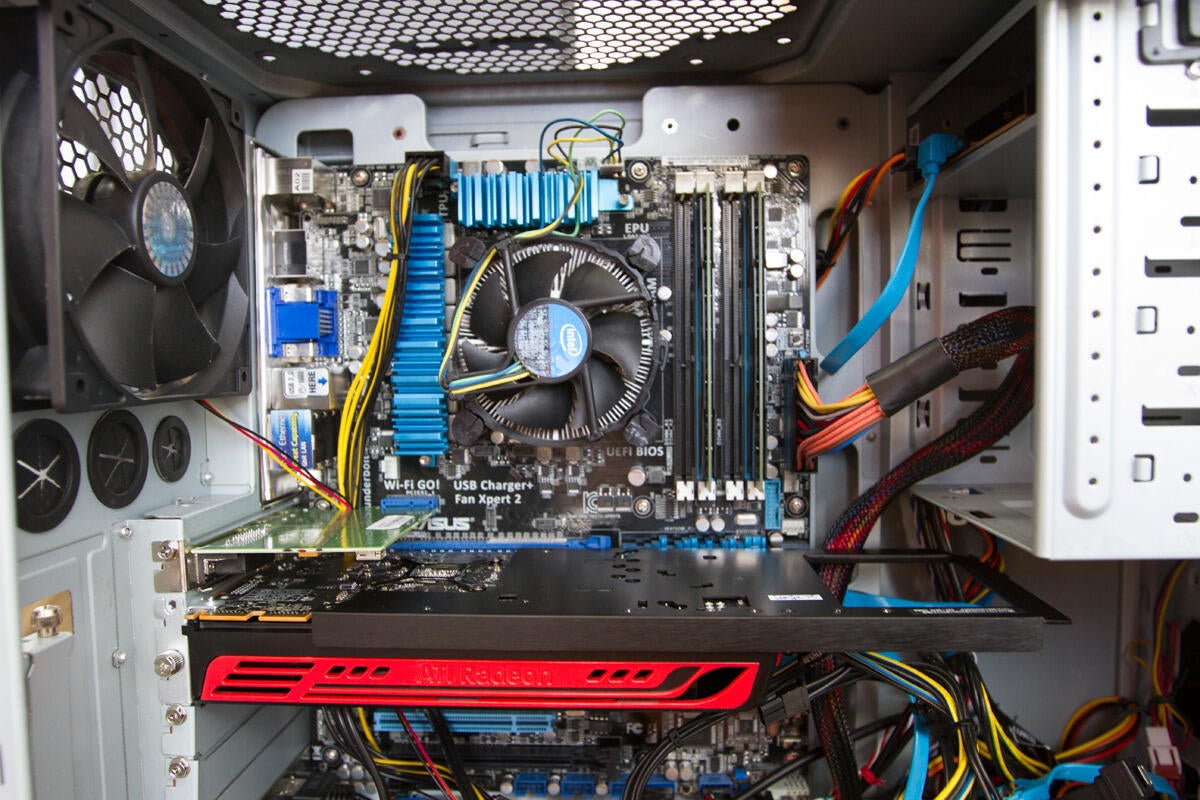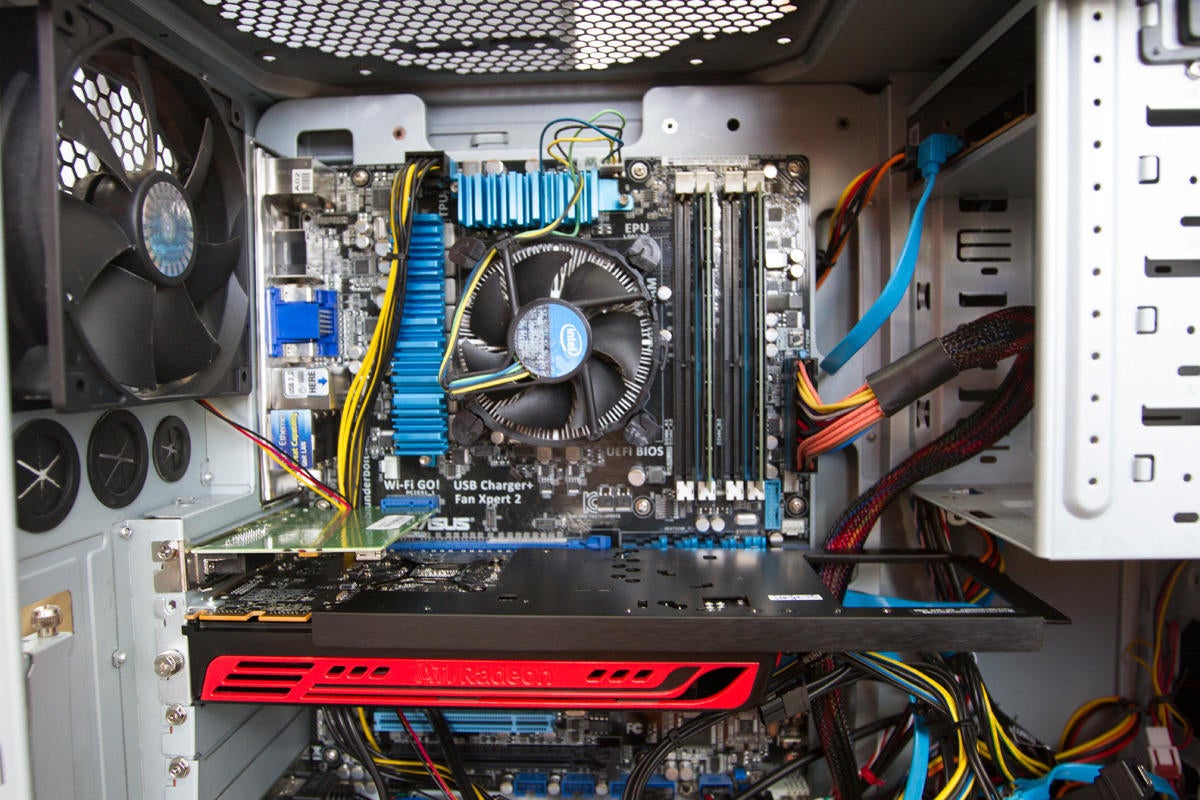Hackintosh: Should you build one?

Consider the pros and cons before you embark on the journey of building your own Mac.

Mike Hominick
“);});try{$(“div.lazyload_blox_ad”).lazyLoadAd({threshold:0,forceLoad:false,onLoad:false,onComplete:false,timeout:1500,debug:false,xray:false});}catch(exception){console.log(“error loading lazyload_ad “+exception);}});
If you’re curious about how to build your own Hackintosh, Kirk McElhearn and I recently built Hackintoshes and wrote about our experiences. These articles are great starting points for researching your own Hackintosh.
But there’s a lot of detail in those two articles, and if all you’re trying to figure out is if you should build your own, there may actually be too much detail.
Why you should build a Hackintosh
There are many reasons to build your own Hackintosh. Here are the three biggies.
- Customization: You can build exactly what you need, not what Apple wants you to have. From a pint-sized portable to a full-size mega tower, onboard video or high-end video card, hard drive type, number, and capacity, speed and amount of RAM, etc. What you build is up to you and your needs (and budget).
- Affordability: By buying your own parts and assembling them yourself, you can wind up with a much less expensive machine than one offered by Apple. In Kirk’s case, he spent $464 to build a Mac that outperforms Apple’s $999 mini. In my case, it’s a tougher comparison, as the iMac includes a 5K display. But if you add the LG 5K display ($1,300) to my build cost ($1,567), that $2,867 total is still about $500 less than a loaded top-of-the-line 5K iMac. And my machine will run circles around that Mac’s gaming performance, and match or exceed it in CPU performance.
- Upgradeability: By building your own Mac, you can easily replace and upgrade parts over time. If you aren’t sure you want to spend over $500 on a high-end video card, buy a decent card for $100 and see how it works for you. If you don’t like it, sell it and upgrade to a faster card. Every part can be replaced at your discretion.
Why you should not build a Hackintosh
On the other hand, the list of cons contains a few possible deal killers.
- No all-encompassing warranty: Each part you buy will have a warranty of some sort, but there’s no overriding warranty on the machine you build with those parts. If the CPU fails, you’ll need to deal with the CPU vendor. Bad graphics card? Probably a different vendor.
- Manual labor required: If you’ve never built a computer before, it can be a bit intimidating when you stare at the pile of boxes on your floor and consider what you need to do to turn it into a working computer. There are tons of guides out there, though, and it’s not overly complicated.
- Fragility: Not in the hardware, but in the software. Every time Apple updates the OS, there’s a chance your Hackintosh may not survive the update process. Before updating, time is required to research the web and see how the process has gone for other users.
- Geeky: More than likely, you will need to spend time in Terminal. If that’s not something you’re willing to do, you probably shouldn’t build your own Mac.
- It’s not a Mac until you make it one: This is the biggie, and a probable deal breaker for many. As described in our articles, both Kirk and I required multiple installations to get our machines running. In between those reinstalls was lots of internet research, taking lots of time—I’d estimate I spent about 30 hours on the project in total. And in the end, you still may not wind up with a fully usable machine, depending on your objectives.
Tips to building a Hackintosh
If, after reading the pros and cons above, you still want to build your own Hackintosh, the following tips may save you some time.
- Use the Buyer’s Guide on tonymacx86.com, and only purchase parts that are listed there. These parts are known to work in Hackintosh builds. Go off the list, and you’re experimenting with your money and time.
- Try to buy all your parts from one place that can handle any warranty returns—Amazon and NewEgg are two good candidates. This will simplify matters if you have a hardware problem.
- Read all the guides first, before you start building or installing anything. You don’t want to reach step seven only to discover you need something you don’t yet have.
- Proceed slowly, and in small steps. After the build, get macOS running first. Then start adding in support for video cards, audio, network, etc.—one at a time.
Summing up
Should you build a Hackintosh? It’s hard to generalize a yes/no answer here, but I’ll try anyway. I say “yes” if you enjoy tinkering with hardware and Terminal, and like building things. I also say “yes” if you’re not intending to make your Hackintosh your main Mac, so it doesn’t need all the bells and whistles working (like Kirk’s machine, not mine). A “yes” answer means you’re potentially OK with losing whatever money you put into the project, in the event you can’t get it working as you need.
Beyond that, I’d say “no.” And quite honestly, I think this is why Apple has left this market segment alone. There’s no fear here of hobbyists disrupting Apple’s business model with their homebuilt Macs. If anything, this may lead more users to purchase an actual Mac, as hobbyists tire of machines that break with updates, and where not everything works as it should.
Would I build another? I’m not sure—then again, I waited nine years between my first two, so ask me again in 2026.


